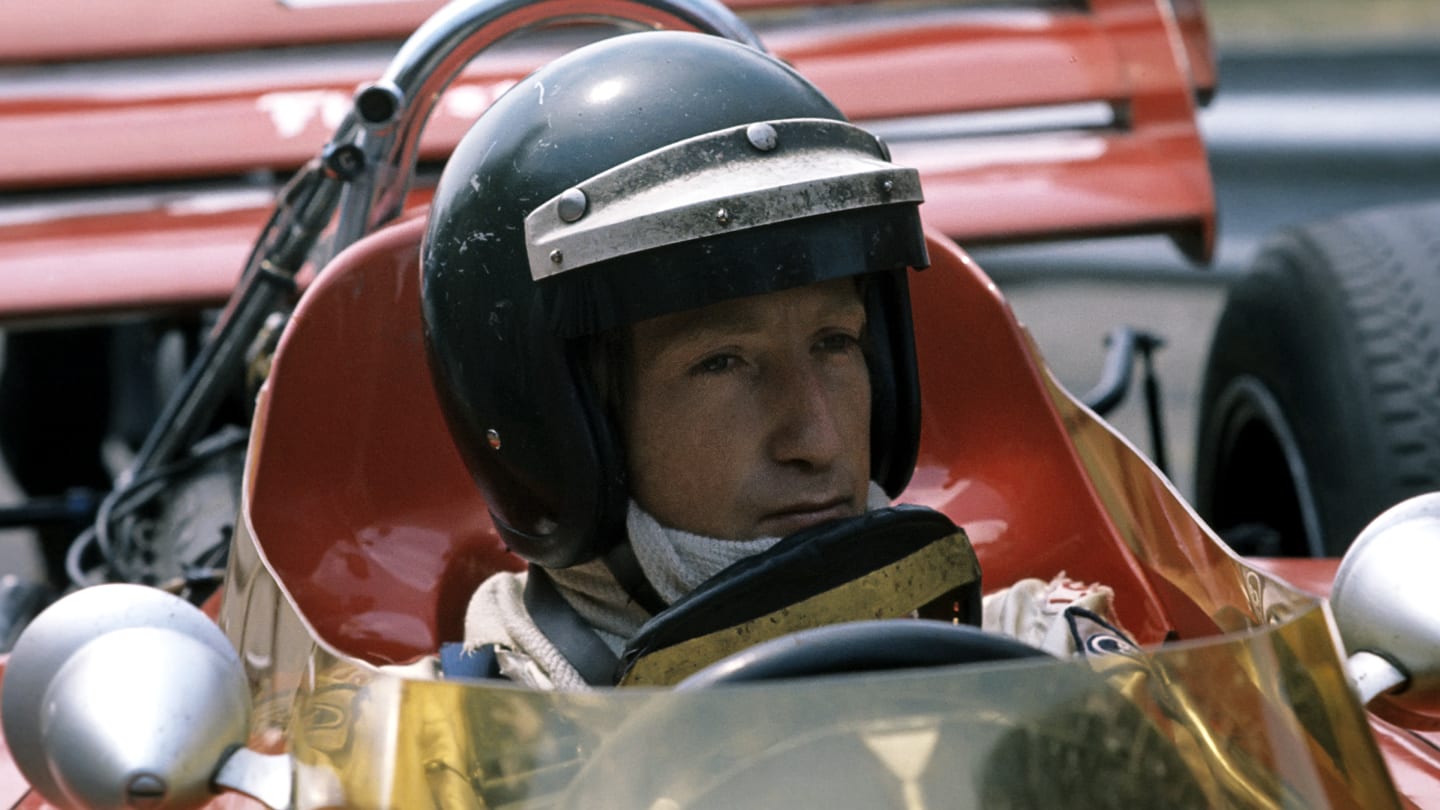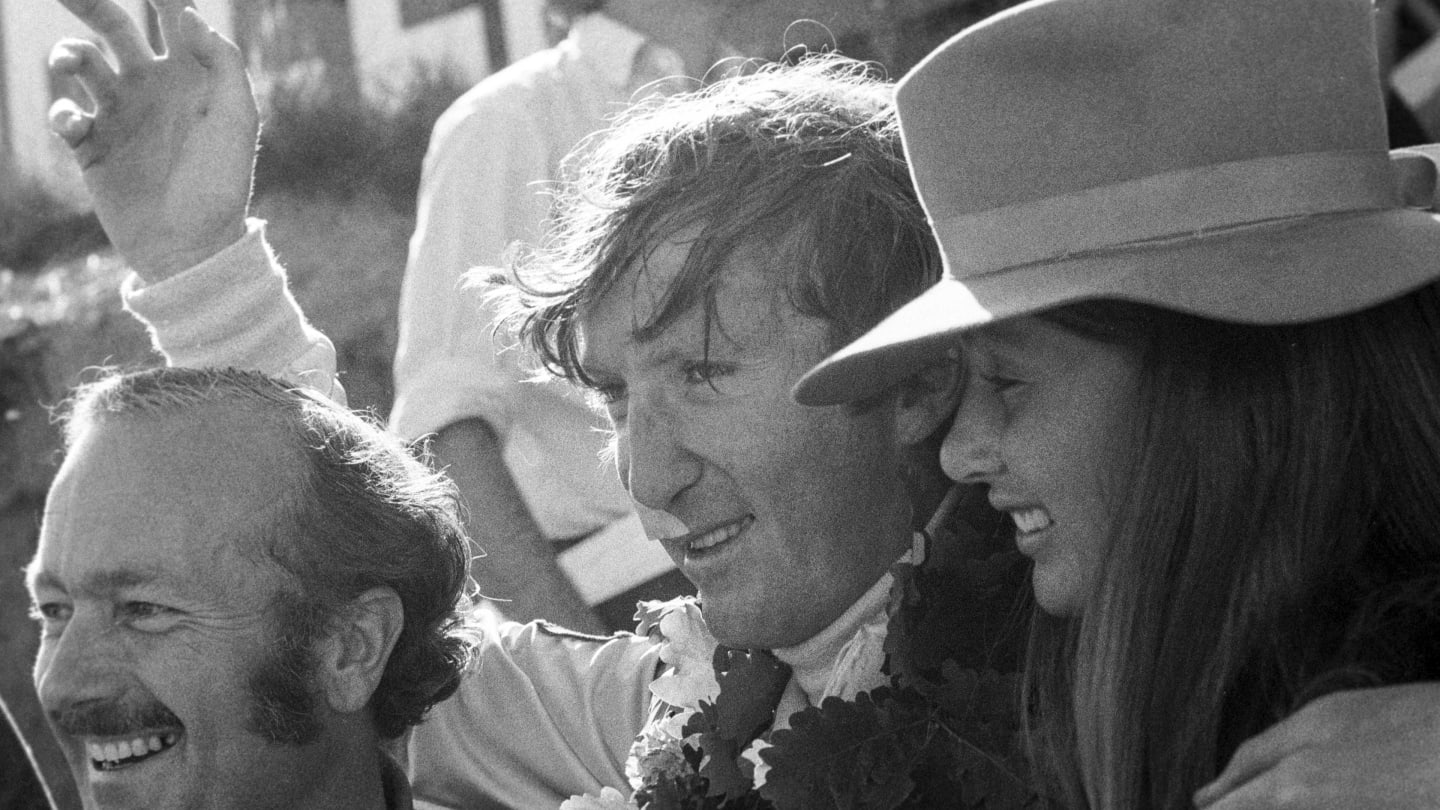
HALL OF FAME - 1970
Jochen Rindt

In the record books he is notable for being the only posthumous World Champion. But before he was killed Jochen Rindt had carved himself a memorable niche in the small but select category of heroes whose voracious appetite for raw racing was demonstrably apparent in a daredevil driving style that was both thrilling and worrying to watch. Few threw themselves into the fray with such vigour, nor did many measure up to Rindt's status as a colourful character. Fiercely determined and resolutely independent, he had a rough and tumble allure seldom seen before or since.
Karl Jochen Rindt, born on April 18, 1942, in Mainz, Germany, was orphaned as an infant when his wealthy parents were killed in a bombing raid. His maternal grandparents adopted him and brought him up in Graz, Austria. A head-strong youngster seemingly hell-bent on defying authority, he continually sought ways to indulge in his burgeoning passions for speed and competition - preferably allied with danger. Twice he broke limbs in schoolboy ski races and when he switched to motorized sport, at first on a moped and then on a motocross bike, he either crashed or won. On public roads he drove battered Volkswagens like a madman and was often in trouble with the police. His rebellious streak caused him to be expelled from several private schools and his strait-laced grandparents (his grandfather was a prominent lawyer) despaired for his future.

Rindt in the Cooper-Maserati T81 at a wet Nurburgring during the 1966 German Grand Prix
He affected a deliberately unkempt appearance and had a personality that tended to be abrasive. He used pieces of string instead of laces to tie his battered shoes. His flat boxer's nose (he was born that way) and abrupt manner of speaking made him seem intimidating. Confident to the point of arrogance and ambitious in the extreme, he resolved while still in his teens to ascend to the very pinnacle of motorsport.
His hero was Count Wolfgang von Trips, the aristocratic German driver whose death at Monza in 1961 failed to dampen Rindt's enthusiasm. He began racing touring cars and then single-seaters, crashing with alarming frequency and several times ending up in hospital. Yet such setbacks only fortified his will to succeed. He personally financed his first forays in more serious formula cars. In 1964 he went to England and bought a Formula 2 Brabham for 4,000 pounds cash. In his second F2 race, at Crystal Palace, the British press reported that 'an unknown Austrian' had beaten the famous Graham Hill. Contemporary accounts noted the spectacular style that was to become Rindt's trademark: 'His car was sideways throughout the race. It went around the corners at unbelievable angles and always looked as if it was about to go off the road.'

Rindt celebrates his 1970 French Grand Prix victory with wife Nina and Lotus team boss Colin Chapman
Yet the rambunctious Rindt became the man to beat in the intensely hard- fought F2 series. In 1965 he signed a three-year Formula 1 contract with Cooper, whose cars weren't competitive. But Ferrari's sportscars were, and Rindt, partnered by the American Masten Gregory, drove a Ferrari 250LM to victory in the 1965 Le Mans 24 Hour race.
While enduring two more seasons in outclassed Coopers and another in an unreliable Brabham, Rindt flogged his machinery mercilessly. Often he seemed completely out of control and Jochen acknowledged that appearances were not deceiving. When asked how frequently he drove beyond his limits he replied: "Did I ever drive within them?"
The audacious Austrian, who perfectly exemplified the popular perception of what a racing driver should be, became a favourite of the fans and of the photographers, for whom he provided some of the best action photos in Formula 1 history. Off the track the pictorial appeal took on 'Beauty and the Beast' dimensions when in 1967 Jochen Rindt married Nina Lincoln, a glamourous Finnish fashion model.
For 1969, Team Lotus founder Colin Chapman signed Rindt to partner reigning World Champion Graham Hill. The newcomer quickly out-paced his illustrious team mate, but the Lotus 49 was as fragile as it was fast. Jochen was leading the Spanish Grand Prix at Montjuich Park when his car's high rear wing collapsed, pitching it into the wreckage of Hill's Lotus, which had earlier crashed for the same reason. Hill was unhurt but Jochen suffered a concussion and a broken jaw and became an outspoken critic of Chapman's cars, calling them unsafe as well as unreliable. However, he modified these views following his first championship victory: the 1969 United States Grand Prix at Watkins Glen.
His first win of 1970, indeed the greatest of his short career, came at Monaco in the outdated Lotus 49, the new 72 model not yet being raceworthy. After languishing in fifth place for much of the race, the retirement of others promoted Rindt to runner-up, 15 seconds behind Jack Brabham driving one of his own cars. Scenting a whiff of victory, Rindt then proceeded to reel in the race leader by means of a thrilling, even frightening, charge that mesmerized all who saw it, including Brabham himself. Faster and faster Rindt went, smashing the lap record to smithereens. For the veteran Brabham, the sight of the wildly careening Lotus looming ever closer in his mirrors proved such a distraction that on the last corner of the last lap he crashed into the barriers.

Rindt at the wheel of the Lotus-Ford 72C in the 1970 Dutch Grand Prix at Zandvoort
Jochen wept tears of joy as Prince Rainier and Princess Grace presented him with the winner's trophy. In the next few weeks he wept at the deaths of two of his close friends - Bruce McLaren and Piers Courage. He began to consider retiring for family reasons, for Nina had presented him with a baby daughter, Natasha. Yet he drove as hard as ever and won four consecutive races, including the Dutch Grand Prix where Courage was killed, and also the French, British and German events.
Then came the ill-fated day of September 5, 1970, when Jochen Rindt's Lotus inexplicably ploughed into a guardrail at Monza during practice for the Italian Grand Prix. One of the first on the scene was his good friend and business manager Bernie Ecclestone, who came away with only two sad souvenirs: a battered helmet and a single shoe which had been thrown some distance from the wreckage.
The fatal accident happened close to where his boyhood hero Wolfgang von Trips was killed in 1961. At that time the German was leading the championship, just as the Austrian was now. But while von Trips was later beaten to the title by his Ferrari team mate Phil Hill, even after his death no one was able to deprive Jochen Rindt of the championship he surely deserved.
Text - Gerald Donaldson